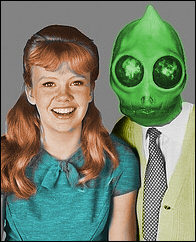Every generation has their "safe porn", the product of media that the young can procure with permission of adults and read without much stigma. "Safe Porn" are those resources of images and prose that adults can allow their children to have that serve a dual purpose of entertainment and education. In the 20s and 30s pulps was one source. In the 40s and 50s it was comic books. From the 50s and beyond there were photography hobby magazines, National Geographic, the Sears Catalog and Sports Illustrated.
For example, a Sports Illustrated subscription is given to junior today because it is all about sports and masculine pursuits. But mom and dad are also very aware the bonus Swimsuit issue allows the kid to satisfy some curiosity while the adults can ignore the ramifications procuring salicious imagery for their children, using it to hope for the what they think is best when it comes to their progeny's emerging self-identity. It isn't the only source of programming/education/socialization available for kids, especially with the technology that is present in nearly every home today, but it is one that parents can somewhat control and not worry too much about. I've known parents who time the arrival of the SI Swimsuit issue by starting the subscription in a certain month, knowing the special issue won't arrive for at least nearly a year, timed right to when they think their child should be starting to show interest in the opposite sex. The lag and opportunity for the child to mature over 12 months allows parents to look the other way and not think about things that make them drink from the bottle hidden in the linen closet. It also allows the youngster to receive a periodical chock full o' babes without having to buy it themselves or dealing with the parents about it and treat it like just another piece of mail.
Left to right, Super-Boy and Boy Detective, sidekick to The Shield.
A generation raised on magazines like Tattletale and the Spicy line of pulps that had their own suggestive covers and pornographic illustrations (semi-nsfw link) would have made the Dads of the 1940s uncomfortable with the notion of their sons reading some comic books. Forgetting that their own version of acceptable pornography via pulps and other mainstream magazines had been under attack as a bad influence nearly a decade previously, fathers would have had less problem with the content of comic books if they were more manly and red-blooded. Certainly the pro-military propaganda pamphlets that comics transformed into in that era had the effect of causing them to gain a grudging acceptance in many households. Any attack on comics that rally the youth of America would have been an attack on patriotism. That seems familiar. We have all been exposed to similar logic a lot in the past few years.
For groups that were on the lookout for hidden "perversions" the male streetwalker poses of the Boy Buddies and the stylized goatse of the pool hall sign doesn't lend to acceptance of comics at the family level. One of the main selling points that led to the backlash against comic books were the perceived homosexual relationships. Comics were packed with imagery through the 40s that if produced today would garner a knowing chuckle from the reader and spawn countless internet memes and image macros ad nauseum. Fortunately, there were plenty of wars going on around that time that would ensure that an entire generation would grow up being rough, tough and battle-hardened.



























Nice short shorts on those two fallas.
ReplyDeleteOh god, that's just so wrong. Try a little FASHION SENSE fellas!
ReplyDeleteI think they are dressed appropriately for what they are doing.
ReplyDelete